The exit of the working class from the Democratic Party is a long saga that began in the late 1960s and culminated in Donald Trump’s takeover of the Republican Party with themes that resonated among working class voters. During this period, Democrats—along with center-left parties through Western democracies who have encountered similar difficulties—have struggled to understand the sources of working-class disaffection and to craft remedies for it. Two recent studies from the Progressive Policy Institute (PPT) have shed new light on these issues.
What is today’s American working class?
Most Americans associate the working class with unionized male occupations such as manufacturing and construction that were dominant in the 1950s and 1960s. But according to a report written by PPI’s Ed Gresser, today’s working class is very different. There are far more workers in health care and retail than there are in manufacturing, and far more in food service than in construction. Many of them are women; many are not unionized. They enjoy fewer benefits than unionized manufacturing workers, and many of them are living from paycheck to paycheck, working two shifts or two jobs to make ends meet. Many working in personal services, such as hairdressing, hope to own their own businesses, and they are more sensitive than are manufacturing workers to regulatory barriers, such as licensing requirements, that impede their aspirations. For this reason, among others, they are less instinctively pro-government than were members of the working class in the long era of Democratic dominance that stretched from the 1930s through the 1960s.
What does the working class believe, and what does it want from political leaders?
A second PPI report, a public opinion survey conducted in partnership with YouGov, investigates working-class sentiments and beliefs.1 While these voters harbor reservations about both political parties, they align more with Republicans than with Democrats on most of the matters that concern them.
On the face of it, working-class voters would appear to be evenly divided in their view of the political parties. Thirty-eight percent trust the Democrats more to put the interests of working-class voters first, while 37% trust the Republicans more. Thirty-six percent see the Democratic Party is more committed to governing and problem-solving than in waging partisan warfare, while 34% see the Republican Party in this light.
But this apparent even division is inconsistent with the voting behavior of America’s working class. In 2020, Joe Biden outpaced Donald Trump by 24 percentage points among voters with a college degree or more while losing to Trump by 8 points among those with less than a bachelor’s degree. Among white voters with less than a bachelor’s, Trump prevailed by 32 points, and Trump also did 25 points better among Hispanic voters with less than a college degree than he did among college-educated Hispanics.
The PPI poll helps us understand why this is so. Forty-five percent of working-class voters, it found, believe that the Democratic Party has moved “too far to the left,” and 40% see it as heavily influenced by “special interests like public sector unions, environmental activists, and academics.” They trust Republicans over Democrats to manage a growing economy, promote entrepreneurship and keep America ahead in new technologies, control public debt and deficits, handle immigration, reduce crime and protect public safety, and make public schools more responsive to parents. Democrats lead in only three areas: combatting climate change, managing America’s clean air transition, and respecting our democratic institutions and elections (the last by a narrow margin of 39% to 34%).
Moving from specific issues to broader themes, working-class voters think Republicans do better in protecting personal freedom, strengthening private enterprise, respecting hard work and individual initiative, and creating economic opportunities for working Americans. On what many Democrats believe is the center economic and social issue—making America fairer—their party only ties the Republicans in the eyes of these voters.
To be sure, Republicans still have an affluence problem. By a margin of 41% to 31%, working-class voters believe that the Republican Party represents the interests of the wealthy more than the Democratic Party does, and 38% believe that the Republicans are too influenced by wealthy donors. But to judge from the results at polling booths, these reservations about Republicans are not as weighty for working-class voters as is their long litany of complaints about Democrats.
Progressive Democrats may be surprised to learn that working-class voters do not share their understanding of the proper role of government in the economy. Although 65% of working-class voters believe that the economy is controlled by the rich for their own benefit, just 19% of them want a large federal government focused on issues such as inequality and the distribution of wealth, compared to 34% who want a smaller federal government that spends and taxes less. A plurality of these voters—47%—opt for a middle course: a federal government that actively steers the economy, but mainly by promoting and protecting free markets.
Many Democrats believe that the electorate will become more supportive of President Biden once they are reminded of his legislative accomplishments. The PPI survey does not support this belief, at least for the working class. One poll question provides details on the bills implementing the president’s economic agenda and then asks these voters for their judgment. Twenty-one percent strongly support what Biden has done on the economy, but 35% strongly oppose it. Overall, 46% support the president’s agenda with varying degrees of enthusiasm while 47% oppose it.
Asked to name the most significant challenge facing the economy today, 36% said “the high cost of living” while an additional 33% said “inflation is outpacing the economy.” Asked to explain these negative developments, 55% said that “government went overboard with stimulus spending, overheating the economy,” compared to 29% who pointed to the aftereffects of the pandemic and 16% who blamed bottlenecks in the supply chain.
Still, the most important change that working-class voters want to see in the Democratic Party concerns not the economy, but rather immigration. These voters reject both opening the door to all comers and slamming the door shut. Instead, they want to reduce illegal entries into the United States while selectively increasing legal migration to bring in the workers our economy needs to grow.
Although working-class voters take climate change—a top Democratic priority—seriously, they are divided on the likely effects of clean energy subsidies, and they seem unlikely to put climate change ahead of other considerations in their own lives. Asked about their top priority in selecting new stoves, home heating systems, and cars, 67% pointed to cost, compared to only 10% who said they would focus on the level of climate-unfriendly emissions.
Although Democrats have scored solid gains among college-educated Americans in recent electoral cycles, policies to support them find little favor with the working class. Fifty-six percent of these voters oppose debt relief for college student borrowers on the grounds that such action is unfair to the majority of Americans who don’t get college degrees and will increase costs for both students and taxpayers over the long term. Asked about the policies most likely to help working people get ahead, 10% named student loan forgiveness and 15% backed a federal government push for stronger labor unions while 74% opted for public investment in apprenticeships and career pathways to help non-college workers upgrade their skills. When asked for their views about policies that would help them personally to get ahead, their responses formed a similar pattern. Six percent mentioned joining a union and nine percent, getting a four-year college degree. By contrast, 69% mentioned apprenticeships with companies or other forms of short-term training programs that combine learning with work.
Overall, the PPI survey documents a pervasive sense of decline among working-class Americans. By a margin of 66% to 21%, they believe that people like them are worse off today than they were 40 years ago. Interestingly, they do not identify a single dominant cause for this decline: roughly equal numbers blame immigration, trade, automation, de-unionization, bad government programs, and cultural change. While they do not express great confidence in either political party to turn around this decline, they lean toward an “America First” stance on issues such as immigration and trade. But they do not accept Republicans’ hardline views on criminal justice and policing, and they are deeply concerned about social conservatives’ efforts to ban books from school libraries and restrict access to reproductive health services for women. Still, when asked which president in recent decades had done the most for average working families, 44% named Donald Trump, compared to just 12% for Joe Biden.
In the short term, the political preferences of working-class voters are likely to be shaped by urgent issues such as high prices and illegal immigration. In the longer term, however, a party that combines moderation on cultural issues with support for government programs that would improve the prospects of upward mobility for the working class would likely improve its performance in this key part of the electorate.
-
Footnotes
- On behalf of PPI, YouGov fielded a national survey of 860 registered working-class voters, using the standard education-based definition of “working-class” as individuals with less than a four-year college degree. YouGov conducted this survey from October 7 to November 6, 2023.
The Brookings Institution is committed to quality, independence, and impact.
We are supported by a diverse array of funders. In line with our values and policies, each Brookings publication represents the sole views of its author(s).

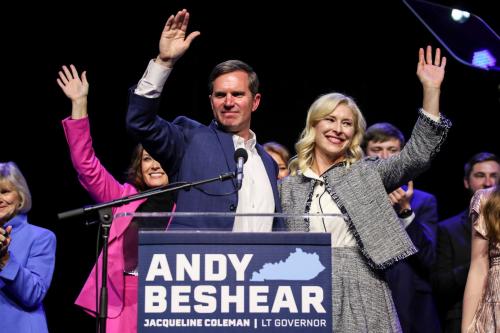

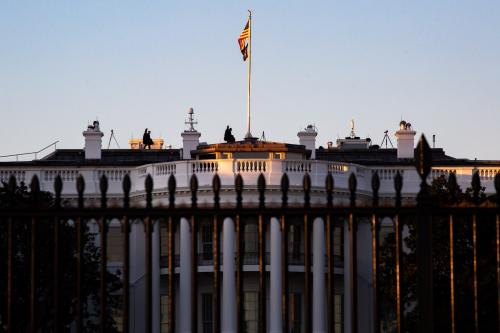
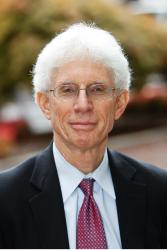

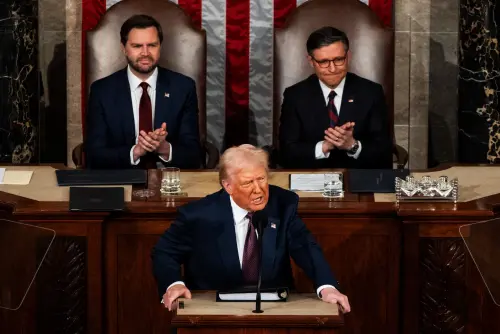
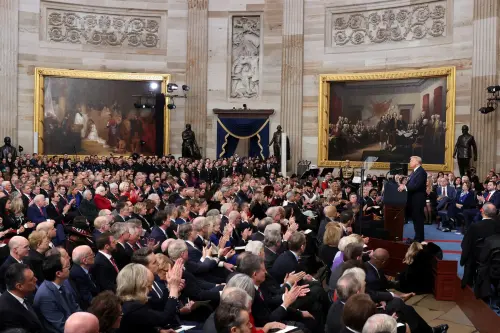
Commentary
What today’s working class wants from political leaders
November 16, 2023